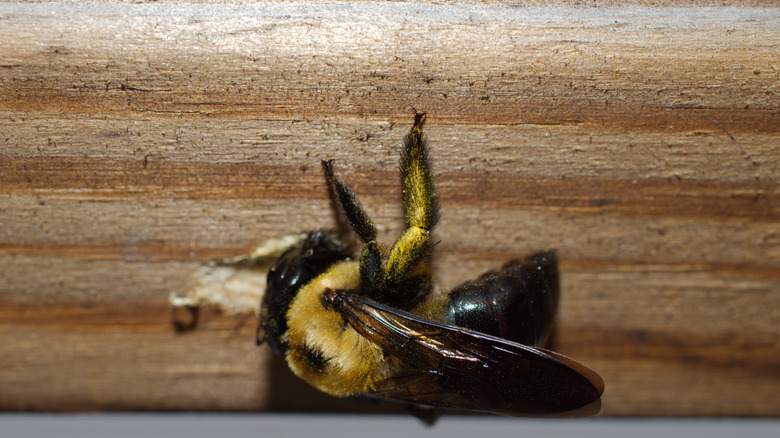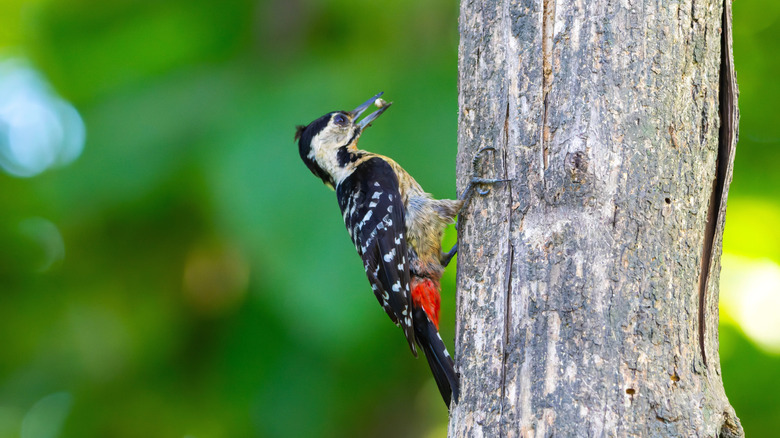The Troublesome Bird Carpenter Bees Can Invite To Your Yard
Carpenter bees are one of the common pollinators you might see in your backyard along with honeybees, bumblebees, and butterflies. While carpenter bees are unlikely to sting and are actually kind of cute, they can invite a troublesome visitor into your yard: woodpeckers. This is because these birds like to eat the larvae of the carpenter bee, so they flock to wherever they can find them.
Woodpeckers are beautiful, but they're not exactly the kinds of birds you want in your yard. This is mostly because woodpeckers have an annoying habit of hitting hard surfaces with their beaks repeatedly. This makes sounds which help the bird communicate with other birds, either looking for a mate or by claiming ownership over the house as its territory. This alone can cause some damage to your house, but it can get even worse when woodpeckers are trying to access food that's inside your home's wood, like carpenter bee larvae. In search of food, woodpeckers can seriously damage anything made of wood: the edges of your roof, beams, decks, and porches. In addition, the sound of a woodpecker hitting on your home repeatedly is likely not what you want to hear at 7 a.m. on a Sunday.
One way to deter woodpeckers from your home and garden is to check if you have carpenter bees making their nests in your home. These are not like common honeybees because they don't live in colonies and beehives. Instead, single carpenter bees like to make their nests in wood, likely under your home's eaves, siding, or decks. Over time, this can damage your home, too, so getting rid of carpenter bees is a smart move either way, even before a woodpecker comes for them.
Preventing carpenter bees from attracting woodpeckers
So if you'd like to avoid your house looking like Swiss cheese, consider carpenter bee prevention your best friend. To deter carpenter bees from making nests in your house and yard, and in turn attracting woodpeckers, there are a few adjustments you can make. Carpenter bees much prefer untreated softwood, so painting exposed wood is an easy way to make your home less hospitable to bees and, as a result, woodpeckers. If you're not willing to paint it, treating the wood with a stain or varnish can also help make it less hospitable. In addition, make sure to keep cracks and holes sealed with caulk or steel wool to prevent the bees from sneaking in.
To keep your yard free of carpenter bees and woodpeckers, consider treating other wooden items near your home, like porch and patio furniture, fences, and other items made of softwood. To safely prevent carpenter bees from nesting in your yard too close to your home, you can try using some carpenter bee repellent spray. These have a strong scent that carpenter bees dislike, which can help prevent them from digging a tunnel into your porch railing or garden fence.
Finally, remember that carpenter bees are great pollinators and therefore, while you don't want them in your home, it's no reason to kill them. If your yard is large enough to coexist with carpenter bees, you could set up some untreated scrap softwood like cedar or pine far away from your house for them to nest into. That way, the bees can still pollinate your garden, and if woodpeckers come to eat their larvae, they won't be doing so near your home.

